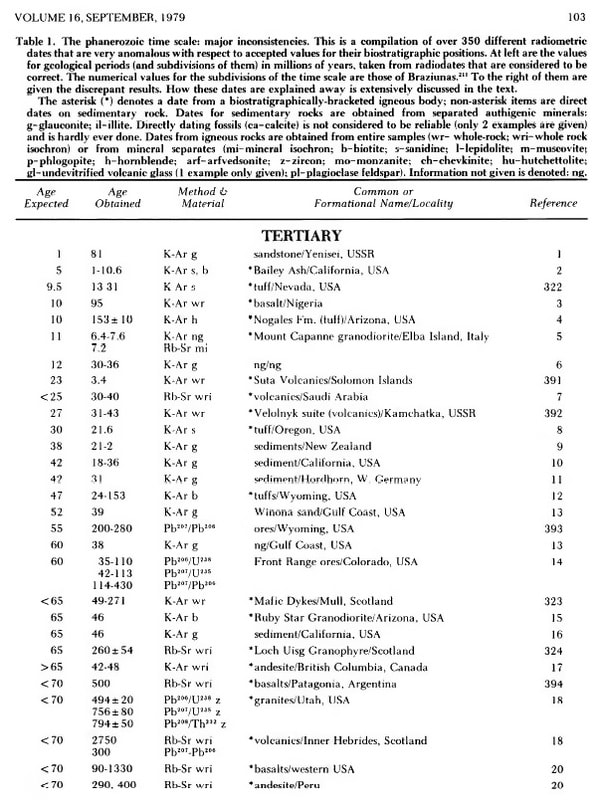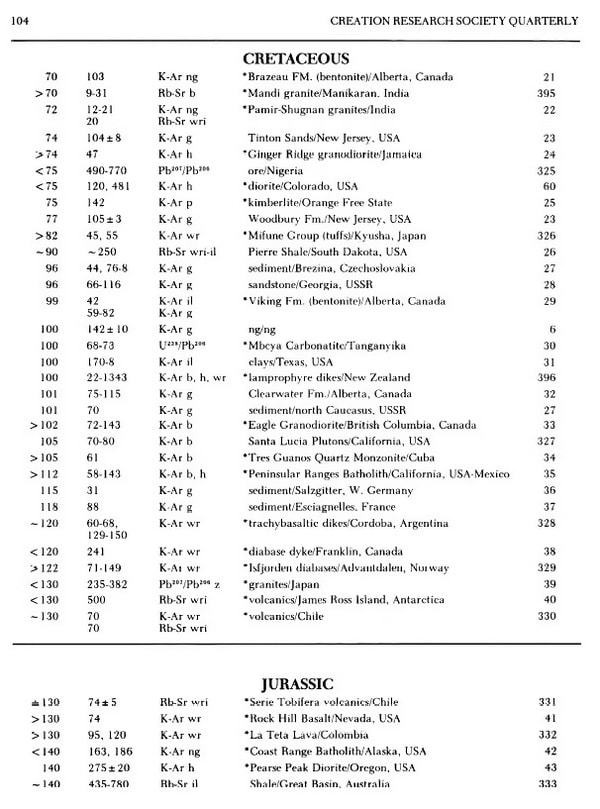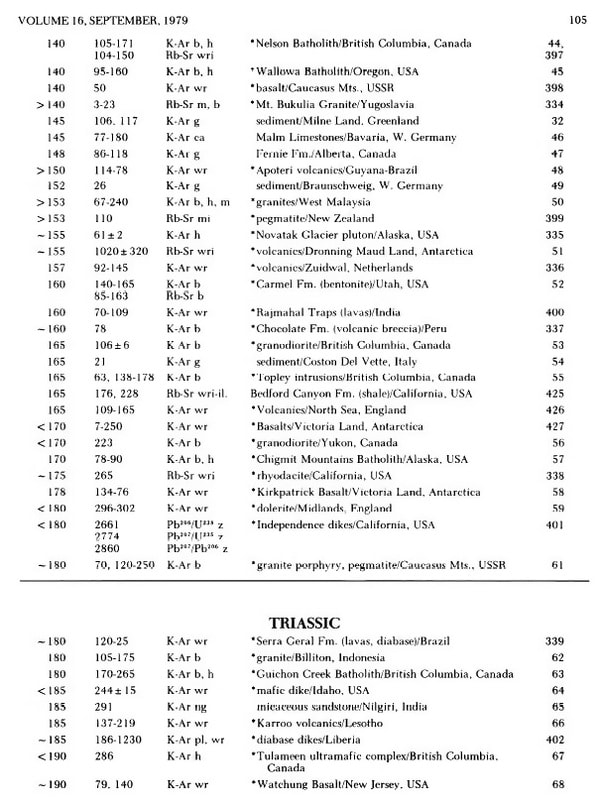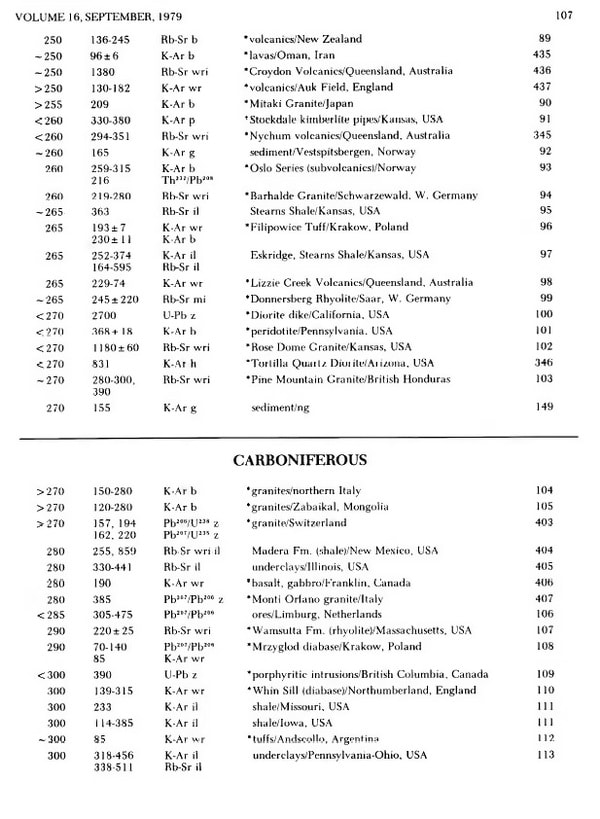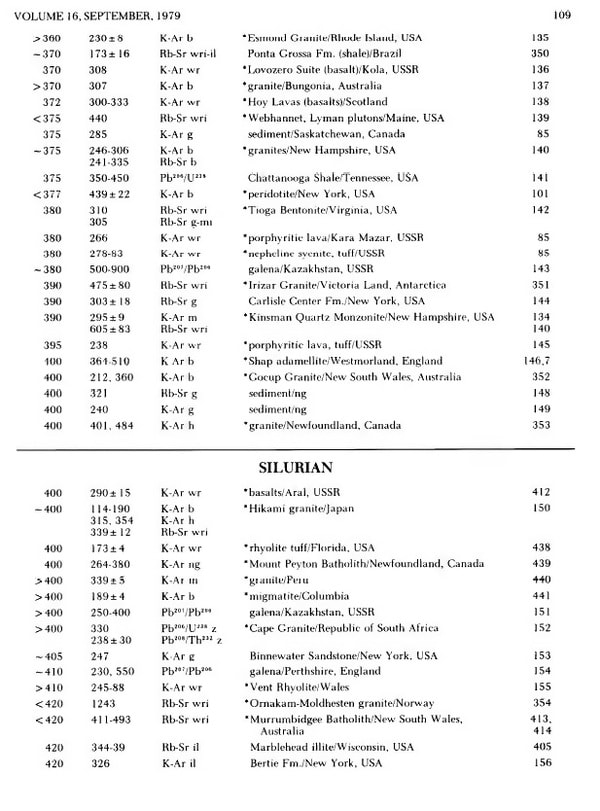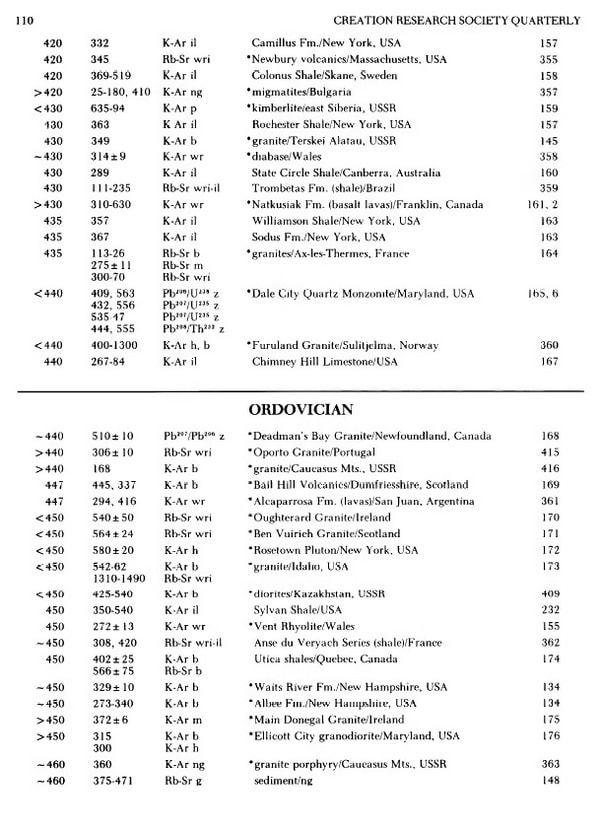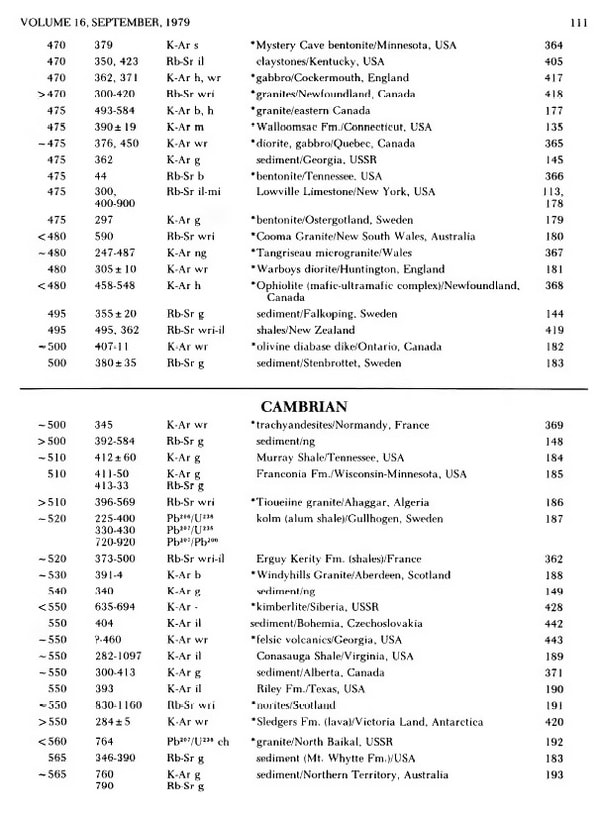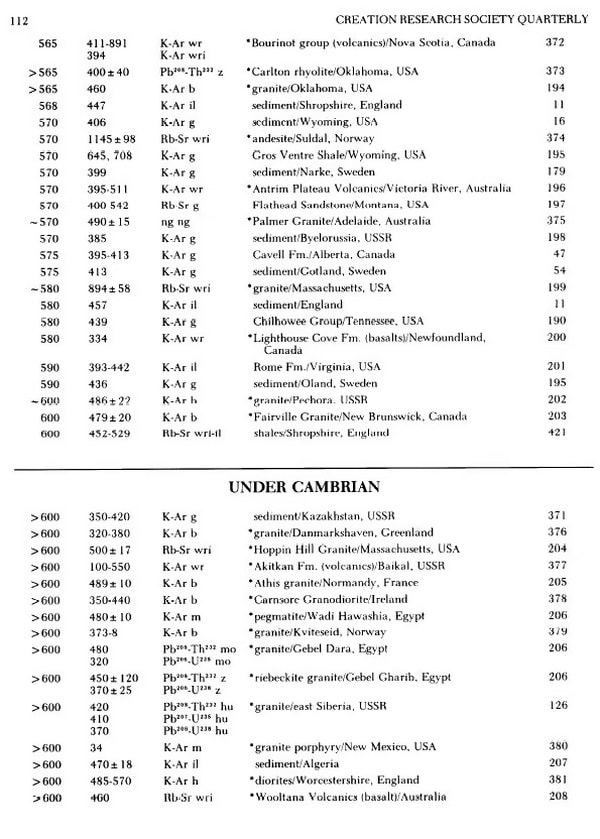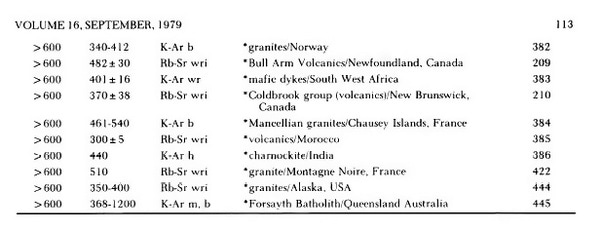(Originally posted May 2005 – Updated clips April 2019. Just Reposted)
Hat-tip to A Creation Perspective (HERE). See entire article PDF HERE, pp. 102-129. References in the article as well:
Table 1 is a compilation of over 300 different sets of dates that are in gross conflict with one another and with expected values for their indicated paleontological positions. How unwanted and discrepant dates are rationalized away is the topic for subsequent sections in this work.
Many other dates could have been listed, but Table 1 is limited to dates which approach 20% discrepancy: being either 20% “too young” or “too old” for their biostratigraphical positions. Many are over 30% discrepant. A 20% discrepancy means that an indicated date is off by at least one geologic period in the lower Mesozoic and off by two geologic periods in the early Paleozoic. From Table 1, it is evident that a 330 million year date is obtained for Carboniferous rock, but that the same value is often obtained for rocks as old as Cambrian. Viewed another way, Devonian rocks give “true” values near 375 million years, but also values of 220 (“properly” Triassic) and 450 (“properly” Ordovician).
The arbitrariness of the practice of selecting some values as being true and disregarding others which conflict with them was recently admitted by Waterhouse,3’5 who commented: “It is, of course, all too facile to ‘correct’ various values by explanations of leakage, or initially high concentrates of strontium or argon. These explanations may be correct, but they must first be related to a time line or ‘cline of values’ itself subject to similar adjustments and corrections on a nonstatistical, nonexperimental basis.”
Table 1 does not include the many anomalous dates from those minerals that have grown in disrepute with respect to radiometric dating. K-feldspars usually give K-Ar ages that are “too young,” and this is attributed to argon loss associated with exsolution and perthitic growth. Only sanidine is considered reliable. Because of their K-feldspars, whole-rock dating of acidic intrusive igneous rocks is avoided, and mica or amphibole separates are used instead. Minerals such as beryl, cordierite, and zeolite often give erratic K-Ar ages attributable to isotope fractionation. With few exceptions, Table 1 is confined to datings on material that is considered to be reliable.
